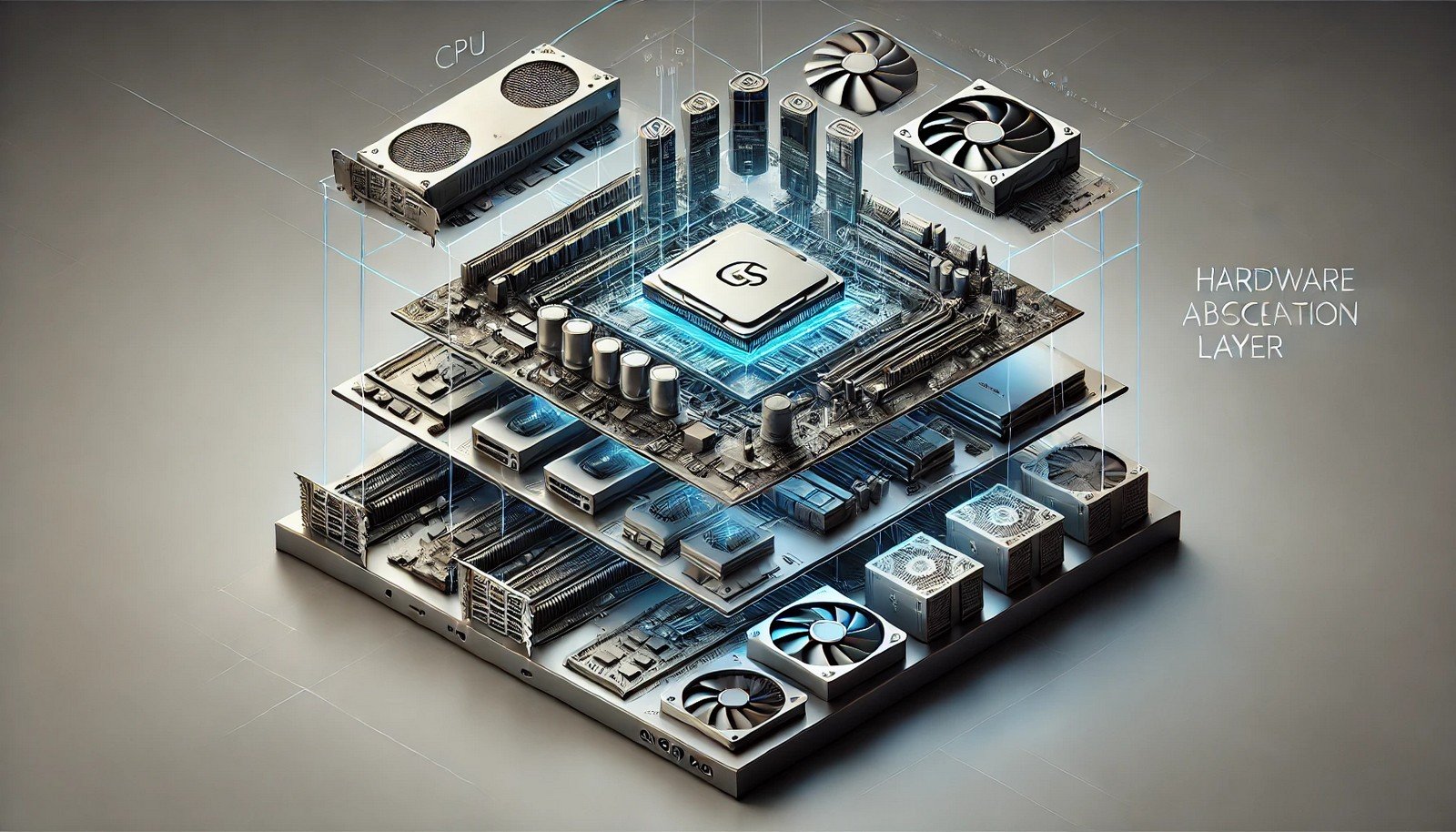Hardware Abstraction Layer
 (Representational Image | Source: Dall-E)
(Representational Image | Source: Dall-E)
Quick Navigation:
- Hardware Abstraction Layer Definition
- Hardware Abstraction Layer Explained Easy
- Hardware Abstraction Layer Origin
- Hardware Abstraction Layer Etymology
- Hardware Abstraction Layer Usage Trends
- Hardware Abstraction Layer Usage
- Hardware Abstraction Layer Examples in Context
- Hardware Abstraction Layer FAQ
- Hardware Abstraction Layer Related Words
Hardware Abstraction Layer Definition
The Hardware Abstraction Layer (HAL) is a software layer that serves as an intermediary between the operating system and the underlying hardware. It abstracts hardware-specific details, allowing the OS and applications to interact with hardware components without needing to know their exact specifications. HAL enables compatibility across different hardware platforms by providing a standardized interface for device drivers and system software. It plays a crucial role in operating systems, real-time computing, and embedded systems, ensuring smooth integration of various hardware devices.
Hardware Abstraction Layer Explained Easy
Imagine you have different types of gaming controllers—one with buttons, another with a joystick. Instead of creating separate games for each type, you use a universal adapter that makes every controller work the same way. HAL is like that adapter for computers. It helps the operating system talk to different kinds of hardware without worrying about the details, making sure everything works smoothly.
Hardware Abstraction Layer Origin
The concept of HAL emerged with the development of modern operating systems in the 1980s. As hardware architectures became more diverse, developers needed a way to ensure software could run on different machines without modification. HAL was introduced as a solution to abstract low-level hardware details and provide a uniform programming interface.
Hardware Abstraction Layer Etymology
The term "Hardware Abstraction Layer" is derived from "abstraction," meaning to simplify complex systems by hiding intricate details. "Layer" refers to its role as an intermediary between the OS and hardware.
Hardware Abstraction Layer Usage Trends
HAL is widely used in modern computing, especially in operating systems like Windows, Linux, and Android. With the growth of IoT and embedded systems, HAL has become even more essential for ensuring software compatibility across different hardware platforms. In mobile devices, HAL helps Android OS communicate with various chipsets, sensors, and peripherals seamlessly. The trend of virtualization and cloud computing has also emphasized HAL’s role in optimizing resource management.
Hardware Abstraction Layer Usage
- Formal/Technical Tagging:
- System Architecture
- Operating Systems
- Embedded Systems - Typical Collocations:
- "HAL implementation"
- "hardware abstraction in operating systems"
- "standardized HAL interface"
- "HAL in embedded computing"
Hardware Abstraction Layer Examples in Context
- HAL enables Windows to support different hardware configurations without requiring separate versions for each system.
- In Android, HAL allows applications to access hardware features like cameras and sensors without needing direct communication with device drivers.
- Embedded systems in automotive industries use HAL to provide a uniform interface for different microcontrollers.
Hardware Abstraction Layer FAQ
- What is the purpose of a Hardware Abstraction Layer?
HAL provides a standard way for operating systems and applications to interact with different hardware components without needing hardware-specific code. - How does HAL improve software portability?
By abstracting hardware details, HAL allows software to run on multiple hardware configurations with minimal modifications. - Is HAL only used in operating systems?
No, HAL is also used in embedded systems, virtualization, and real-time computing to manage hardware interactions efficiently. - How does HAL work in Android?
In Android, HAL acts as a bridge between the OS framework and hardware-specific implementations, ensuring smooth communication between apps and hardware.
Hardware Abstraction Layer Related Words
- Categories/Topics:
- Operating System Architecture
- Embedded Computing
- Virtualization
Did you know?
The Android Hardware Abstraction Layer plays a vital role in enabling manufacturers to create custom device implementations without modifying the core operating system. This modularity allows Android to run on a wide range of devices, from smartphones to IoT gadgets, making it one of the most versatile operating systems in the world.
PicDictionary.com is an online dictionary in pictures. If you have questions or suggestions, please reach out to us on WhatsApp or Twitter.Authors | Arjun Vishnu | @ArjunAndVishnu

I am Vishnu. I like AI, Linux, Single Board Computers, and Cloud Computing. I create the web & video content, and I also write for popular websites.
My younger brother, Arjun handles image & video editing. Together, we run a YouTube Channel that's focused on reviewing gadgets and explaining technology.



Comments powered by CComment